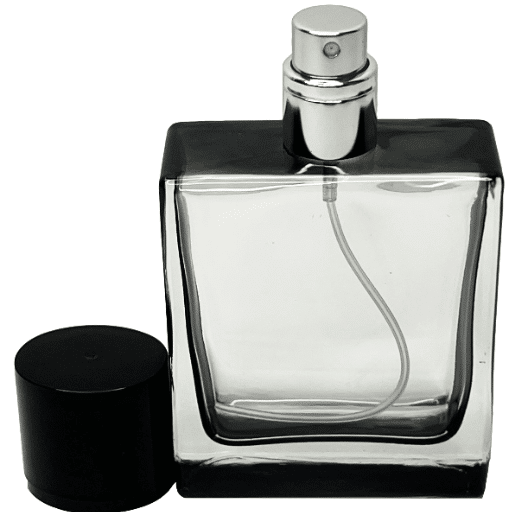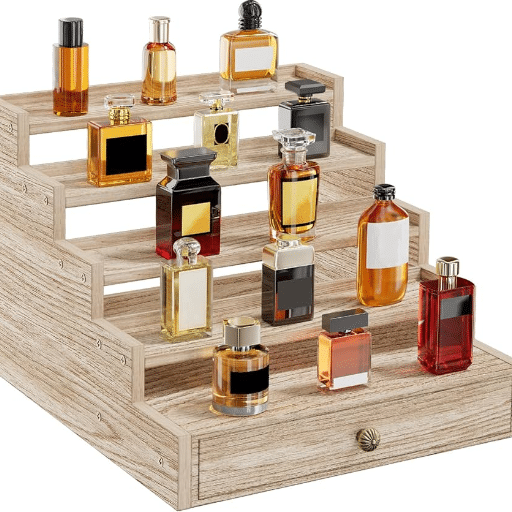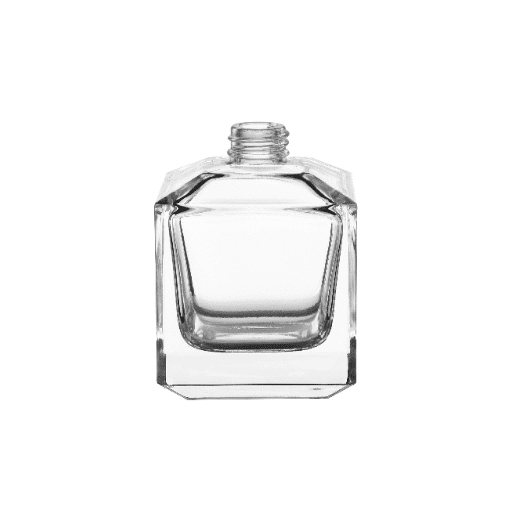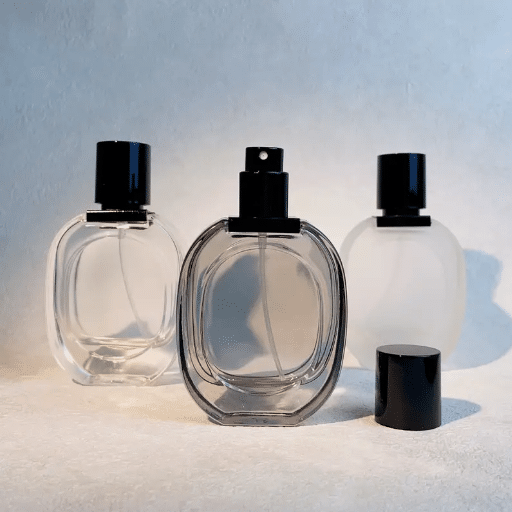Refilling a perfume bottle may sound like a simple thing, but it calls for you to be very careful, very accurate and have just the right way of doing it to preserve your favorite scent fresh and perfectly intact. Whether you have it in mind to cut on waste, save some money or still have a relationship with your father while you keep reusing the same bottle, being taught the way to refill a perfume bottle is a pretty useful skill. This article is a step-by-step guide that will show you the right techniques to refill, tell you the tools you should have, and give you hints on how to dodge the common pitfalls. Once you have finished reading up on the subject, you will be totally self-assured about the refilling of your perfume bottles just like a pro, and still, the quality and longevity of your fragrance will be maintained.
Understanding Different Types of Perfume Bottles
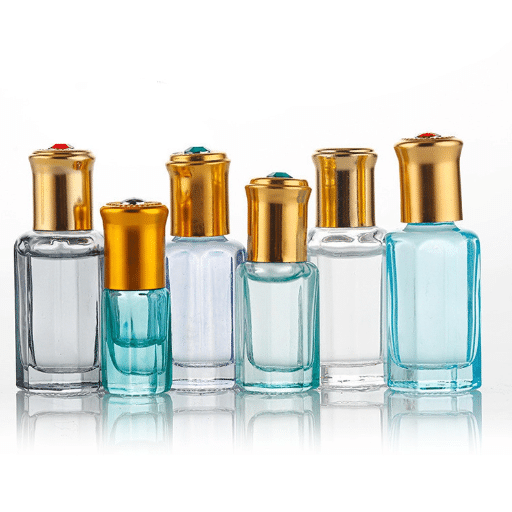
There are many different designs of perfume bottles, and by recognizing their distinctions, you can find the best approach to fill them. Here are the most common types:
- Standard Screw-Top Bottles: These are the bottles with an unscrewable cap and sprayer, making them the least troublesome to refill. One needs only to take off the top of these to get at the liquid inside.
- Crimped Spray Bottles: These bottles have a closed-off spray mechanism. To refill them, you may need to use a special tool or adapter that can effectively transfer the essence.
- Rollerball Bottles: The balls on these bottles are generally used for oil-based perfumes, and the bottles are of the same type. To fill up these bottles, you first need to take the rollerball out with a tool gently.
- Atomizers: The most user-friendly and portable of all bottles, atomizers have a refillable reservoir and are usually connected with spray bottles through a nozzle adapter.
By knowing your bottle type, you can choose the proper method and tools to use without spoiling or affecting the quality of the fragrance.
Standard Spray Bottles
Standard spray bottles are one of the most widely used and user-friendly tools for applying perfumes. In general, a mist pump is attached to this type of bottle, ensuring that the perfume is evenly dispersed by creating a fine mist. To fill a standard spray bottle, it is necessary to remove the pump head and use a small funnel to facilitate the entry of the perfume into the bottle without any leakage. To wash and reuse these bottles, it is essential to first fill the container with rubbing alcohol or warm, soapy water and rinse it thoroughly to avoid any residue or scent carryover. Moreover, there are even some modern refillable spray bottles that involve leak-proof technology and are made of very durable material. This transforms them into a sustainable and clever choice for perfume lovers, offering cost-efficiency.
Perfume Atomizers
Fancy bottles of perfume are small, handy gadgets designed to spread the scent as a thin cloud, making the application precise and reducing product waste. To emphasize the fact, the design seems to have changed for the better, as it has in the past, with new atomizers featuring leak-proof valves, cans made of long-lasting metal or glass, and refillable chambers. Not only do modern atomizers improve the customer experience, but they also help reduce the use of single-use plastics, aligning with waste-reduction and environmental protection movements. Furthermore, the containers are specially designed to keep the air, as the case may be, odorless and away from the perfume, which may cause the perfume to deteriorate over the years. Three features that instantly boost user preferences—practicality, style, and green practices—are combined in nothing but perfume atomizers, which is why they are still a hit!
Refillable vs. Non-refillable Bottles
| Parameter | Refillable Bottles | Non-refillable Bottles |
|---|---|---|
| Convenience | Easy to refill and reuse | No refilling required, single-use focused |
| Environmental Impact | Reduces plastic waste, eco-friendly | Contributes to waste, less sustainable |
| Cost Efficiency | Cost-effective over time | Higher long-term cost due to replacements |
| Durability | Often robust, designed for repeated use | Less durable, designed for one-time use |
| Scent Preservation | Maintains scent integrity with refill design | Preserves scent until used, no refilling risk |
| Ease of Use | Requires cleaning and careful handling | Extremely user-friendly, no steps involved |
| Personalization | Allows custom scents to be added | Limited to original fragrance only |
| Initial Cost | Often higher upfront investment | Usually economical upfront |
| Availability | Widely available in premium fragrances | Common across most low and mid-tier options |
| Portability | Often travel-friendly designs offered | Pre-filled, sealed, ready for travel |
Essential Tools for Refilling Your Perfume Bottle
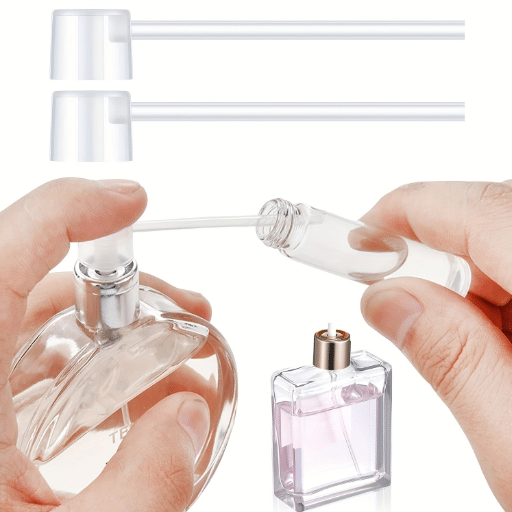
- Funnel – A small funnel makes sure that the liquid is transferred with great precision and without any spills.
- Refillable Bottles – Bottles with spray nozzles or rollers can be filled with great ease and then can be used for an exact and targeted application.
- Dropper or Pipette – The best way to control the exact amount of fragrance during the transfer.
- Gloves – Disposable gloves can protect hands from direct exposure to strong perfumes and help maintain the cleanliness of the work area.
- Clean Workspace – A clean, smooth and easy to clean surface guarantees little or no mess and easy cleaning process.
Using a Syringe for Precision
The use of a syringe in the perfume transfer qualifies as an exemplary method for precise isolation and avoiding loss. For starters, get a syringe that has a small-gauge needle. It will be easier for you to control the amount being withdrawn. Next, pick up a syringe, pull out the desired amount of perfume, and stop just before it overflows. Align the syringe opening with the container opening and proceed to transfer the perfume slowly. Push the plunger steadily and gently, and don’t apply too much force; this way, you will maintain a steady procedure. This technique is highly recommended for handling high-concentration perfumes, as even slight volume variations can have an impact.
Funnel Techniques for Easy Transfer
The funnel is the simplest and most effective way to avoid spillage and transfer perfume or essential oils between containers. So, if you want to use a funnel in the best possible way, make sure that you get the one that is a perfect fit for the mouth of your container. Choose a funnel that is not made of reactive materials like stainless steel or glass, especially when working with fragrances or volatile substances, to avoid chemical reactions that could alter the smell. The gradual flow of the liquid into the bottle is guided by the tapered funnel structure, and controlled pouring is desirable as it prevents air bubbles from disturbing precision. Miniature funnels are designed for use with small bottles, offering a convenient mix of precision in one product. The user must always ensure that the funnels are properly cleaned after use to prevent any mix-ups of different types of liquids. This business tool is a must in the field of perfume management and ensures a fast and clean transfer process.
Additional Tools: Caps and Seals
Caps and seals play a role in maintaining the quality and longevity of liquids during storage and transportation. Various types of caps—twist-on, flip-top, and snap-on—are used to keep the container closed accurately and prevent liquids from spilling or leaking. On the contrary, seals create a second layer of protection, shielding the product from the influence of air, moisture, or any foreign particles. Some widely used technologies for sealing include tamper-proof seals, which create the impression of a fresh product, and induction seals, which provide an airtight seal. These devices are indispensable to industries, serving as the main factors in the efficiency, safety, and trustworthiness of liquid handling and packaging across the board.
Step-by-Step Guide to Refilling a Perfume Bottle
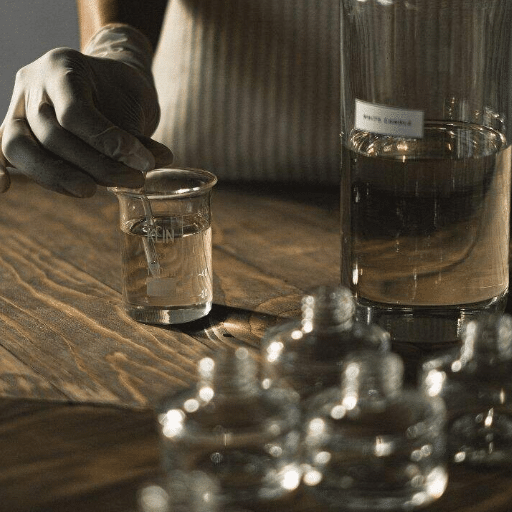
1
Prepare Your Work Area
Search for a flat, stable, and clean area to be your workstation. Cover it with a cloth or a paper towel, which will help to prevent possible spills. The area should be bright enough for safe work.
2
Gather the Necessary Items
Have on hand the main container of the perfume, the refill container, and a small funnel or dropper (if available).
3
Open the Perfume Bottle
Take off the cap or the nozzle quite cautiously from the empty perfume bottle. Move the nozzle by hand, slightly twist or pull it out, depending on the bottle’s design.
4
Transfer the Perfume
Use the funnel or dropper to transfer the perfume from the refill to the bottle a little bit at a time. Try not to fill the bottle because it might spill.
5
Reassemble the Bottle
Give the bottle a good wipe with either the rag or the paper towel. Reattach the spray nozzle or the cap once the filling part is done.
6
Test the Spray Mechanism
Sprinkle a small quantity of the product to ensure the nozzle is working correctly and the fragrance is evenly distributed.
Preparing Your Workspace
To start, one needs to put all required tools and materials in a central location to simplify the process. There is a list of necessary items: a refillable perfume bottle, your favorite perfume or fragrance, a small funnel or dropper, and a clean rag or paper towel. Besides, it is required that there is a workspace that is bright and spacious, which, in turn, can promote easy movement and minimize the risk of spills. Moreover, it is recommended to center the fragility of the perfume arboreous, keeping a flat and steady surface where the perfume can be the only trace on the towel or tray. Being fully involved from the very beginning of the process can assist in the smooth and efficient execution of the refilling process.
Removing the Cap and Seal
At first, closely examine the perfume bottle to see and understand how the cap and seal are fixed. Most perfume bottles have a simple snap cap that can easily be pulled out or twisted, whereas others may have a more secure locking technique. If there is a sealed bottle, one might need to use a tool like tweezers or a thin flat-headed screwdriver to unseal it. In any situation, always be careful not to apply too much force to the bottle, as it might result in a cracked or broken neck. If you find the stopper hard to remove, check for additional latches or grooves within the bottle that need to be aligned. Having a firm grip and being patient in this process would also help prevent spills or mishaps, thus preserving the remaining perfume.
Filling the Bottle with Perfume
Start by choosing a clean and steady surface to fill the bottle. First, you need a safe, distraction-free area with no chance of spilling. When switching perfume from a larger container, one might require a pipette or a small funnel to do it accurately. The best way to start is to either pour the perfume carefully or put the funnel or pipette near and then suck the perfume into it. We should be quite particular not to make the bottle too full of the liquid. The bottle should ideally contain an imaginary line to help you add the right amount, ensuring the liquid remains safe and leak-free as you close it. A slow and controlled motion will not only reduce waste but also be a representative act of respect for the environment. At the same time, when the container’s lid or seal is restored after the bottle is filled, it is necessary to ensure it is closed firmly to prevent evaporation or leakage. The right way of handling ensures the durability of the scent and maintains quality for future use.
Troubleshooting Common Issues When Refilling
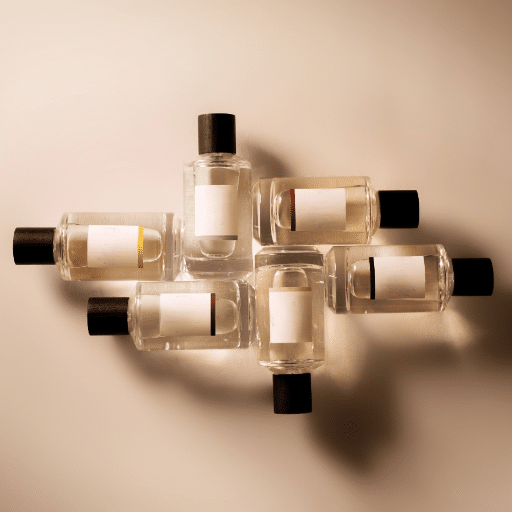
Why is my refillable bottle leaking after sealing?
Make sure the cap or the seal is being put on where and how it should be. Inspect the bottle or the seal for any cracks that may cause the mix to leak. If you use a compatible funnel or an adapter, you might avoid misalignment during the refill process.
How to manage the situation if the liquid being smelled is spilled during the refilling?
You may need to clean the bottle and the surrounding areas with a clean, dry cloth to prevent the surface from becoming greasy. Optionally, using a smaller funnel or syringe would be a wiser choice for more precise refilling.
Why does the smell stay mild after refilling?
Certify that you are indeed using the fragrance that matches the one you were, and also ensure that the original formula has not expired or been altered. Preserving the fragrance in a superb, dark location will keep it in optimal condition.
What are the measures that can be taken against the overflow?
Take the level as shown by the marking on the refillable bottle. If the bottle has no marking, leave a little space so that if it tips over, nothing will come out when you seal it again.
Dealing with Air Bubbles
During the refilling process, air bubbles can sometimes be seen, resulting in uneven dispensing or a weaker spray. Tapping the side of a bottle lightly is a nice way to make the trapped air rise to the top, and hence a solution in this case. Also, slowly operating the spray nozzle several times can be a good way to reduce the amount of air in the mechanism. Moreover, during the refilling process, it is advised to use an upright vessel for lower air incorporation. Finally, if the bubbles do not disappear, using a funnel with a vent may be considered to ensure the transfer process does not introduce air into the liquid. The correct handling and tools can be the solution to the continuous and smooth distribution of your fragrance.
Ensuring a Proper Seal
Having a proper cover is essential for leak prevention and maintaining the quality of the product inside. Start by going through the screw-cap threading on the bottle, and check for indications such as rust or dirt that may prevent it from closing correctly. Clean the threads with a slight touch and ensure no moisture is retained before moving ahead. Position the cap or neck of the bottle correctly and twist gently until you feel the resistance. However, you should not tighten too much, as it could crack the sealing rubbers or damage the threading over time. When liquid is stored the usage of rubber or silicone gaskets and other similar materials that are of high grade can improve the quality of sealing. It is advised that one should keep an eye on whether the seals have been torn or are damaged; by doing so, one is assured of long-term functioning and avoids unexpected leakage issues.
What to Do If the Bottle Won’t Fill
If the bottle is not filling, start by checking for any visible obstructions in the nozzle, funnel, or the opening of the bottle. Debris and residue can quite often impede the flow of liquid. You should clean the opening properly by using a cloth or brush along with warm water. Next, check the liquid source to ensure that it is not clogged or blocked and is being dispensed freely. Moreover, air pressure can be a factor affecting the filling; therefore, relaxing the cap or providing a small vent can allow air to escape as the bottle is filled. One should also confirm that the bottle is being filled upright and that the liquid’s viscosity adheres to the container’s design specification. For issues related to mechanical or pump-action systems, refer to the manufacturer’s troubleshooting guide for the recommended solution, or consider replacing the broken parts as a good option. In addition to this, regular cleaning and maintenance of all the parts involved can be the best way of avoiding these issues over time.
Best Practices for Different Fragrance Types
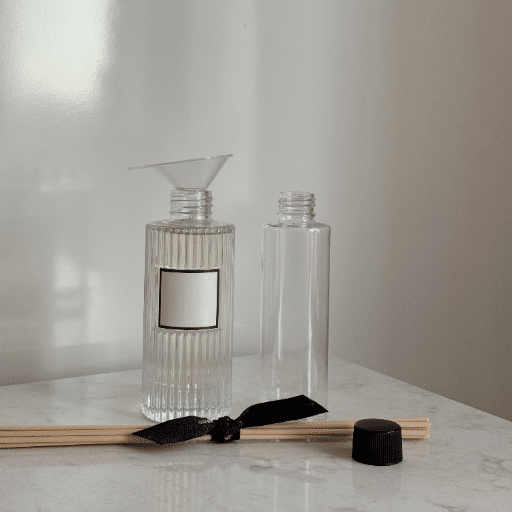
Different fragrances have different natures and thus different handling methods:
Essential Oils
To avoid light exposure, keep essential oils in black or dark-colored glass containers to prevent the breakdown caused by light. Before use, dilute these oils with the necessary dilution to avoid skin irritation. The purity should be maintained by handling the oils with clean tools at all times.
Eau de Parfum
The most common ways of applying perfume are spraying and applying it to the pulse points. To make it last, apply it to your wrist and neck at the back of your ears. In time, the pulse areas, or hot spots of the body, will emanate fragrance. Also, do not store in the bathroom but in a cool, dry place.
Eau de Toilette
Less strong and more frequent use is the advantage of toilet water, for which you should bathe before applying a spritz for that clean, fresh skin smell. Touching up the scent during the day becomes quite addictive.
Home Fragrances
With candles, make sure the wick is cut short regularly to prevent it from burning out. With diffusers, occasionally change the scent by flipping the reeds.
These are the tips for enhancing the life and quality of the particular fragrance.
Refilling Floral vs. Woody Fragrances
Flower and sedative scents, known as nature’s fantasy, are the most difficult perfumes to put back, as they lose their natural characteristics. Floral fragrances, which typically contain very light scents like rose, jasmine, or lily as their main component, should be kept in dark, cold places to protect the lighter molecules from cracking during pouring or refilling. It is also necessary to use clean, sterilized containers to avoid contamination, which can alter the scent profile.
Conversely, woody fragrances, typically characterized by more intense and heavier scents like sandalwood, cedar, or patchouli, are the complete opposite. They can improve significantly if handled appropriately during refilling. The key to the longevity of such complicated mixtures is to preserve them using airtight containers and avoid subjecting them to overheating. Although typically woody perfumes do not have to be fragrantly weaker, they can still be softened and given a special character by adding another layer of floral scent to it, thus with a little bit of customization, anyone could create a peculiar and special perfume or cologne that would be no the same as any others.
Storing Empty Perfume Bottles
Empty perfume bottles should be stored properly to maintain their quality and enable reuse. A good way to start this is by cleaning the bottles thoroughly before storing them, so that no last bits of the fragrance or oil can decay and become detrimental later. Make sure they are scorched so that moisture does not build up, which is a condition for mold or bad smell formation, and keep the bottles in a cool, dry place, and still away from sunshine, as long as they are subjected to heat and light, which can most particularly affect the material’s integrity for glass or decorated bottles. People who own collector’s editions or ornate designs can protect the aesthetic beauty of the products by either using a wrapper or storing them in their original packaging. Keeping bottles standing up straight and placing them gently are ways to avoid any scratches or spills. The habit of following such practices will make the empty perfume bottles continue to be an asset in the home that is both functional and stylish.
Maintaining the Quality of Your Perfume
To ensure your perfume’s fragrance stays the same, adequate storage is essential. Perfumes are likely to be spoiled by environmental elements, which act like their worst enemies. These include heat, light, and air. Keeping your perfume in a shaded, cool place will eventually help preserve its fragrance. Consider placing your bottles in the drawer, cupboard, or even the original packaging to maximize protection. Also, always ensure the cap is tightly sealed after opening it, so air will not spoil the scent or cause the evaporation of fragrance molecules. By following these guidelines, not only will you be able to maintain the original smell of the perfume, but the shelf life will also be extended, allowing you to use it for longer.
Reference Sources
Building Brand Image in the Refill Perfume Industry
Key Findings: This study highlights the use of methanol (methyl alcohol) as a solvent and cleaning agent in the refill perfume industry. It discusses the implications of such practices on brand image and consumer trust.
The Analysis of Estee Lauder Group’s Dominant Position
Key Findings: While not exclusively about refilling, this paper examines the strategies of Estee Lauder, including their approach to sustainable packaging and potential implications for refillable products.
Frequently Asked Questions (FAQs)
What is the best way to remove the sprayer from a perfume bottle?
One of the most effective ways to unclog the perfume bottle is to take it out by the simplest and smoothest way possible. If otherwise, grab it tight with pliers and simply twist the sprayer off. It is better to try it with some back and forth motion right at the beginning to gradually loosen the sprayer. If you still have the trouble moving the sprayer, then you may take the sprayer with a piece of cloth for better friction and attempt turning it off this way. The person must be careful not to put too much pressure as it might cause the bottle to snap off. Upon completion, the person can quickly and gently either refresh their scent or transfer it to a new bottle.
Can I use a syringe to refill a perfume bottle?
Yes, precisely, a syringe is likely to be very helpful in the process of refilling a perfume bottle, especially if the volume in question is not big. One recommendation for such a process is to first take the atomizer off in order to facilitate the liquid entrance to the bottle. The perfume needs to be sucked into the syringe with the utmost care so that it does not drip and get messy along the way. The following thing to do is to gradually push the plunger down while the needle has already pierced the bottle neck to dispense the perfume into it. The method is greatly valuable in that it gives an exact measurement of the essence being poured in, and also because it makes refilling a piece of cake by eliminating spillage completely.
What should I do if the perfume bottle cap is stuck?
If you as human, the help a person, and by-the-way bast try pulling up the cap, quite slowly. When you begin to step by step, take the agitated manner and the cap as you do it. If the thing remains the same, it may be an advisable action to use pliers so that the cap comes off; however, the user should be extremely careful not to destroy the bottle with a little pressure. One thing you can do is heat up the cap by keeping it under warm water for some time, and then try to unscrew the cap using a cap opener, with water added if needed. And simply wrapping the cap with your grips or material will give you the needed power to twist it. Keep in mind that you need to have all problems handled once the cap is off, the bottle is filled and moved to the next process.
How do I refill a perfume atomizer?
The act of refilling a perfume atomizer is not a very complex one. The very first thing that must be done is to ascertain whether the atomizer is completely empty for there might still be a bit of the perfume remaining that could be forced out. In the refill process, the cap is usually removed and the sprayer could also be detached. The most organized method to pour the new perfume into the atomizer is by using the smallest funnel or a syringe. It is very important to be cautious as it is a quite simple task to overfill the atomizer; it must typically not be more than three-quarters full. Then, you could replace the sprayer and cap, and you are off to smell your new fragrance.

